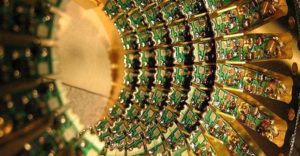Quantum computing stands at the forefront of technology, leveraging the principles of quantum mechanics to tackle challenges too intricate for traditional computers. IBM Quantum pioneers this field, providing real quantum hardware to developers worldwide, a concept unimaginable just three decades ago. Here’s a breakdown of this transformative technology and why it’s crucial for the future.
Why Quantum Computing?
In the realm of supercomputers, classical machines excel at complex tasks but struggle with intricate problems, where numerous variables interact in convoluted ways. Tasks like simulating molecular behavior or detecting subtle fraud patterns in financial transactions pose challenges beyond classical capabilities. Quantum computers, however, manipulate quantum bits (qubits), enabling the creation of multidimensional computational spaces. Unlike classical counterparts, quantum algorithms efficiently solve intricate problems like chemical simulations, holding immense potential for diverse fields, from medicine to semiconductor design.
How Quantum Computers Work
At the heart of quantum computing lies the qubit, the quantum counterpart of classical bits. Unlike classical processors, quantum processors require extremely low temperatures, just above absolute zero, to prevent decoherence, a loss of quantum states. Achieved through super-cooled superfluids, superconductors enable qubits to exist in states of superposition and entanglement.
- Superposition: Qubits, when in a state of superposition, represent all possible configurations, forming complex computational spaces crucial for intricate problem-solving.
- Entanglement: Quantum entanglement correlates the behavior of two qubits, where changes in one directly affect the other, facilitating synchronized operations.
- Interference: Quantum interference manipulates waves of probabilities in superpositioned qubits. Through selective interference, undesirable outcomes cancel out, while amplified outcomes provide solutions to computations.
Applications Across Industries
Industries worldwide are recognizing the potential of quantum computing:
- Medicine: Advancing drug discovery and molecular simulations.
- Finance: Detecting intricate fraud patterns and optimizing trading strategies.
- Logistics: Solving complex route optimization problems.
- Energy: Revolutionizing materials for renewable energy solutions.
- Manufacturing: Enhancing complex supply chain management.
As quantum hardware and algorithms progress, a new era of problem-solving emerges. Quantum computing is poised to redefine the boundaries of what’s possible, revolutionizing how we approach complex challenges in science, technology, and beyond. Stay tuned for a future powered by quantum possibilities.
For my opinion, in essence, the article provides a basic understanding of quantum computing but lacks critical analysis, practical examples, and expert insights, leaving us with unanswered questions about its real-world significance and challenges. But more information you can get from official website IBM.






